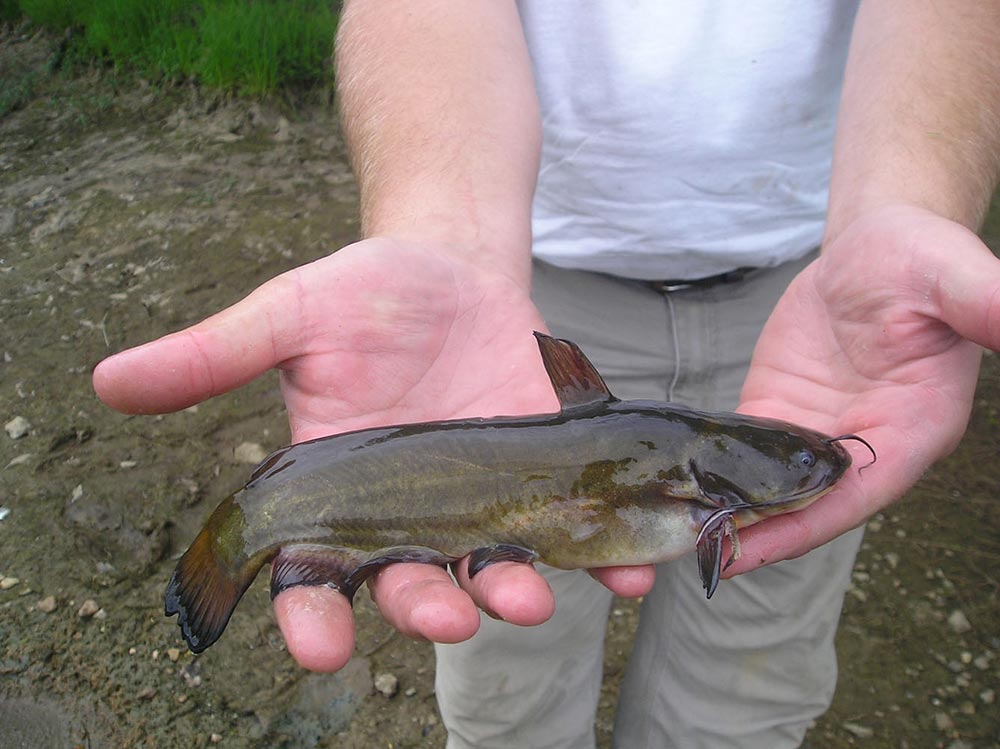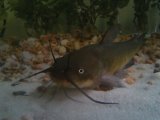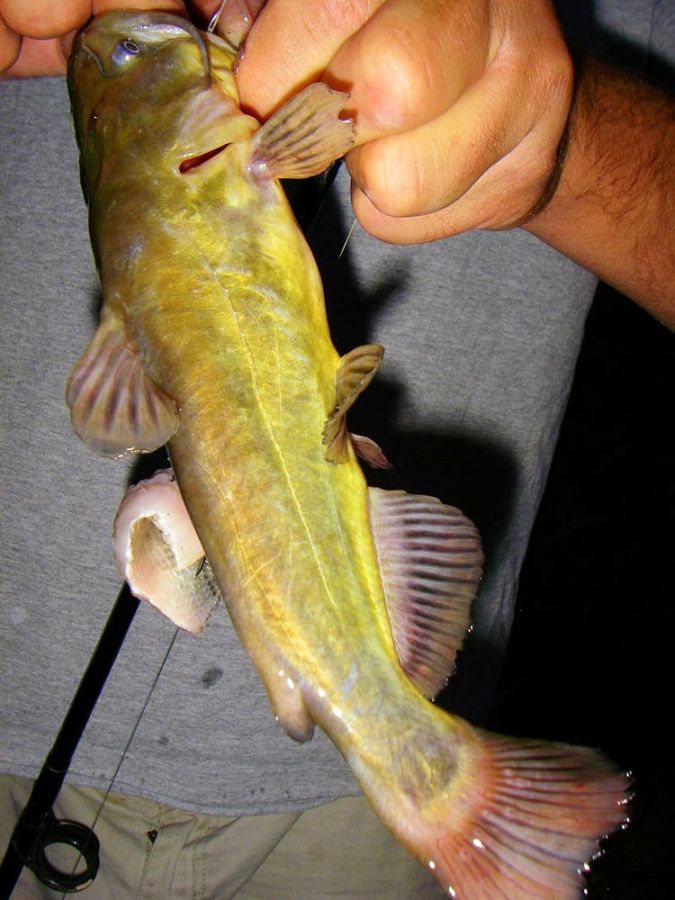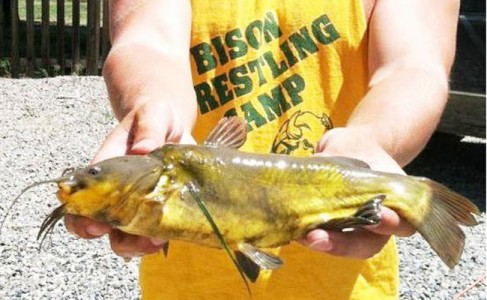Yellow Bullhead Catfish Species Information
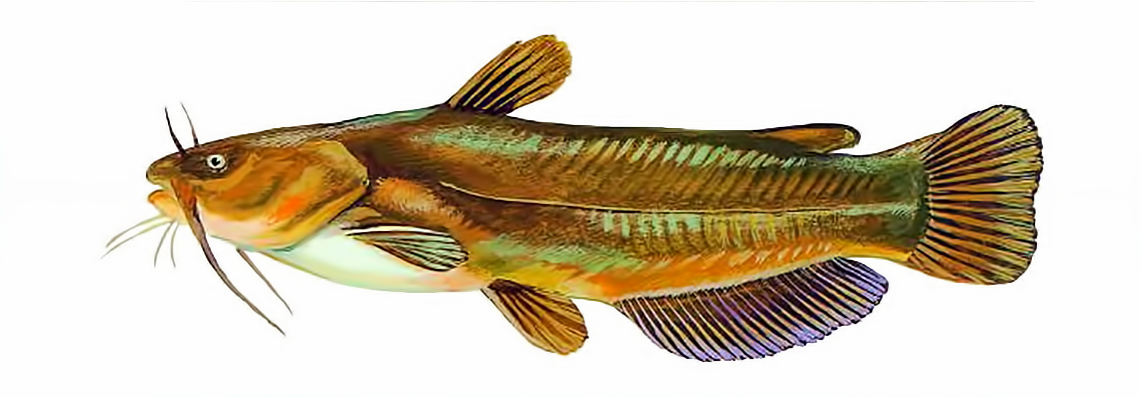
Yellow Bullhead - Ameiurus natalis
The Yellow Bullhead has white or yellow chin barbels throughout most of its range. The anal fin is long and fairly straight in outline, with 24-27 rays. The rays at the front of the anal fin are slightly longer than those at the rear. There are 5-8 large teeth on the rear of the pectoral spine. The caudal fin edge is rounded or truncate (almost straight). The body is yellow-olive to slate-black above, with a lighter, yellow-olive side and white to bright yellow below. The fins are dusky, and the anal fin commonly has a dusky stripe in the middle. The dorsal fin base lacks the dark blotch found in some other species of Ameiurus. The first gill arch has 13-15 rackers. To 18 1/4 in. (47 cm) total length.
Geographic Range
Yellow bullhead (Ameiurus natalis) range throughout the eastern United States, extending north to southeastern Canada and west to the Great Plains and Rio Grande drainage; they are introduced elsewhere.
- Biogeographic Regions: Nearctic, native
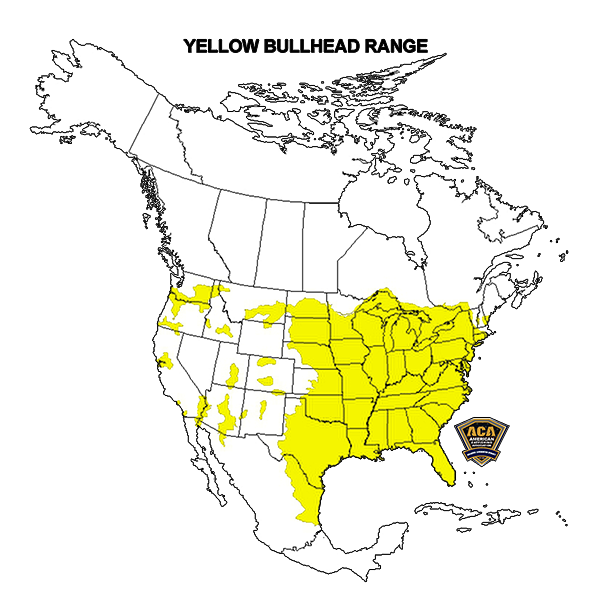
Habits of the Yellow Bullhead Catfish
Learn about the habits of this catfish species.
Physical Description
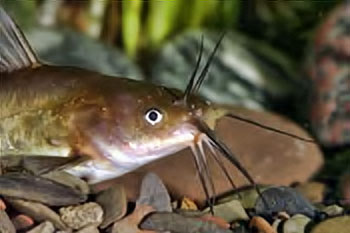 Yellow bullhead are ray-finned fish that lack scales. The dorsal part of the body can be yellow to olive, brown, mottled gray, or black. The belly is usually a yellow color. The caudal fin is rounded and unforked. Anal fin rays number 24 to 28; 25 to 26 is most common. Yellow bullhead may live to be 7 years old, and grow up to 45.7 to 48.3 centimeters long and weigh up to 3.2 kilograms.
Yellow bullhead are ray-finned fish that lack scales. The dorsal part of the body can be yellow to olive, brown, mottled gray, or black. The belly is usually a yellow color. The caudal fin is rounded and unforked. Anal fin rays number 24 to 28; 25 to 26 is most common. Yellow bullhead may live to be 7 years old, and grow up to 45.7 to 48.3 centimeters long and weigh up to 3.2 kilograms.
Yellow bullhead are similar to black (Ameiurus melas) and brown (Ameiurus nebulosus) bullhead. They differ from these two species in that they have white or yellow chin barbels. Both black and brown bullhead have some dark pigmentation on the chin barbels. Fins and colorations are similar among the three species.
- Average mass: 454 g/16.00 oz
- Range length: 20.3 to 25.4 cm/7.99 to 10.00 in
Food Value
Life Span
8 - 12 years
Habitat
Yellow bullhead prefer backwaters with slow current in rivers and streams. They can be found in the shallow parts of streams, lakes, ponds, or large bays. Habitat varies from a slow current with poorly oxygenated, highly silted, and highly polluted water to a more swift current with clean and clear water that has aquatic vegetation. Yellow bullhead are bottom dwellers, living in areas with muck, rock, sand, or clay substrates.
- Habitat Regions: temperate, freshwater
- Aquatic Biomes benthic: lakes and ponds, rivers and streams, temporary pools
Yellow Bullhead: Image Gallery
Lifespan/Longevity
Yellow bullheads have a 7 year life span in the wild.
- Range lifespan Status: wild 7 (high) years
- Average lifespan Status: wild 4.0 years
Home Range
At this time there is little to no information on home range in yellow bullheads.
Food Habits
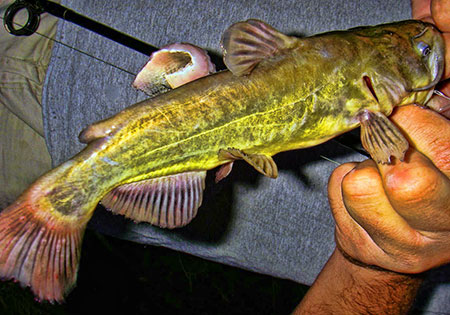 Like all other catfish species, yellow bullheads are opportunistic feeders. Yellow bullheads feed at night. They have been known to eat minnows, crayfish, insects and insect larvae, aquatic invertebrates, and worms. Compared to the other two bullheads, the yellow bullheads consume more aquatic vegetation. The young will feed on aquatic invertebrates.
Like all other catfish species, yellow bullheads are opportunistic feeders. Yellow bullheads feed at night. They have been known to eat minnows, crayfish, insects and insect larvae, aquatic invertebrates, and worms. Compared to the other two bullheads, the yellow bullheads consume more aquatic vegetation. The young will feed on aquatic invertebrates.
- Primary Diet: carnivore, insectivore, eats non-insect arthropods, molluscivore
- Animal Foods: fish, carrion, insects, mollusks, terrestrial worms, aquatic crustaceans
- Plant Foods: macroalgae
- Other Foods: detritus
Predation
Yellow bullheads are preyed upon by larger fish such as largemouth bass (Micropterus salmoides), black crappie (Pomoxis nigromaculatus), bluegill (Lepomis macrochirus) and other catfish. Large wading birds and some turtles will also take the adults. The young will be taken by smaller predators, aquatic invertebrates, leeches, and crayfish. They can inflict venomous stings with their pectoral spines, helping them to avoid predation. ("Yellow Bullhead", 2005)
- Known Predators: largemouth bass (Micropterus salmoides), black crappie (Pomoxis nigromaculatus), bluegill (Lepomis macrochirus), large wading birds (Aves), turtles (Testudines)
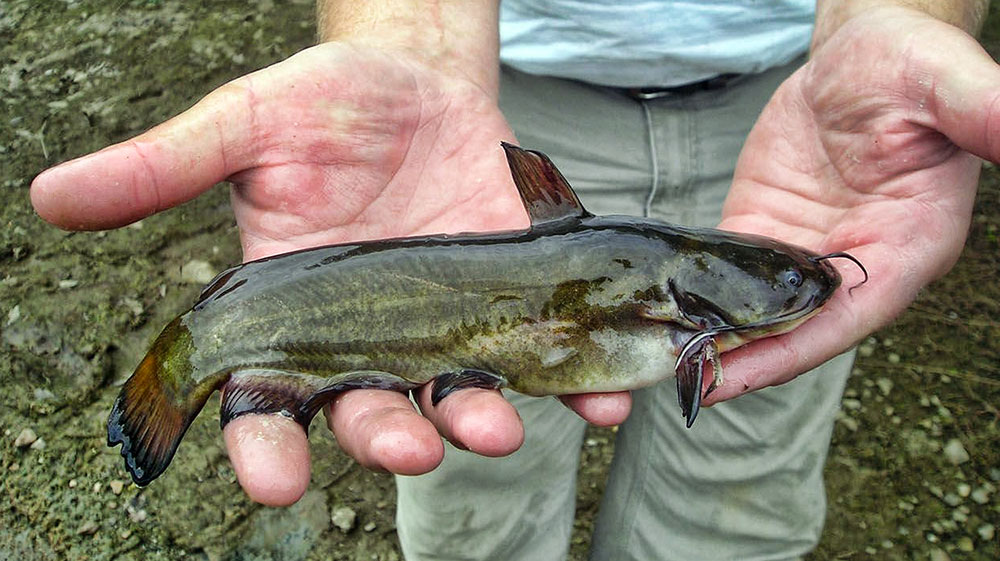
Conservation Status
 Yellow bullheads are not known to have any specific conservation status. Identification: The Yellow Bullhead has white or yellow chin barbels throughout most of its range (dusky brown in peninsular Florida). The anal fin is long and fairly straight in outline, with 24-27 rays. The rays at the front of the anal fin are slightly longer than those at the rear. There are 5-8 large teeth on the rear of the pectoral spine. The caudal fin edge is rounded or truncate (almost straight). The body is yellow-olive to slate-black above, with a lighter, yellow-olive side and w hite to bright yellow below. The fins are dusky, and the anal fin commonly has a dusky stripe in the middle. The dorsal fin base lacks the dark blotch found in some other species of Ameiurus. The first gill arch has 13-15 rackers. To 18 1/4 in. (47 cm) total length.
Yellow bullheads are not known to have any specific conservation status. Identification: The Yellow Bullhead has white or yellow chin barbels throughout most of its range (dusky brown in peninsular Florida). The anal fin is long and fairly straight in outline, with 24-27 rays. The rays at the front of the anal fin are slightly longer than those at the rear. There are 5-8 large teeth on the rear of the pectoral spine. The caudal fin edge is rounded or truncate (almost straight). The body is yellow-olive to slate-black above, with a lighter, yellow-olive side and w hite to bright yellow below. The fins are dusky, and the anal fin commonly has a dusky stripe in the middle. The dorsal fin base lacks the dark blotch found in some other species of Ameiurus. The first gill arch has 13-15 rackers. To 18 1/4 in. (47 cm) total length.
Similar species
- The Black Bullhead, A. melas, has dusky or black chin barbels, a rounded anal fin, and fewer anal rays (19-23) and rakers on the first gill arch (15-21).
- The Brown Bullhead, A. nebulosus, usually is mottled on the side of the body, has dusky or black chin barbels and fewer anal rays (19-23).



